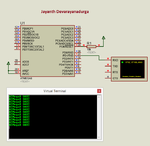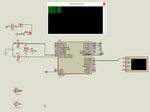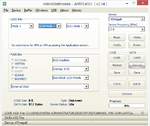hardik.patel
Member level 5
Hi Friends,
I want to design wireless Device control using CC2500 Uart module.
For transmitter part, i am transmitting a string which must be visible at hyperterminal.
But its not as expected. H/w is ok as i had tested it with other i/o operation.
Before this i had tried this with 16Mhz n 11.0592Mhz but though not succeed then i had followed to the datasheet, n replaced the crystal with 7.3728Mhz but still problem continued.
Even i had tried to reduce/increase the all Baud rate in Flash Magic with (16,11.0592n 7.3728Mhz) so kindly correct me that where i am wrong.
MCU-Atmega8
Compiler - AVR GCC Programmer's Notepad
Xatal= 7.3728Mhz
Module i used for wireless -http://www.sunrom.com/p/rf-serial-data-link-uart-2-4-ghz
(To work with module its a later part)
Code as well as screen shot of Hyperterminal is attached.
Regards,
Hardik
- - - Updated - - -
I had connect Tx-rx(MCU pin) with PC (via Max232's rx-tx pin)..so there is not problem with any h/w connection, I think.
I want to design wireless Device control using CC2500 Uart module.
For transmitter part, i am transmitting a string which must be visible at hyperterminal.
But its not as expected. H/w is ok as i had tested it with other i/o operation.
Before this i had tried this with 16Mhz n 11.0592Mhz but though not succeed then i had followed to the datasheet, n replaced the crystal with 7.3728Mhz but still problem continued.
Even i had tried to reduce/increase the all Baud rate in Flash Magic with (16,11.0592n 7.3728Mhz) so kindly correct me that where i am wrong.
MCU-Atmega8
Compiler - AVR GCC Programmer's Notepad
Xatal= 7.3728Mhz
Module i used for wireless -http://www.sunrom.com/p/rf-serial-data-link-uart-2-4-ghz
(To work with module its a later part)
Code as well as screen shot of Hyperterminal is attached.
Regards,
Hardik
- - - Updated - - -
I had connect Tx-rx(MCU pin) with PC (via Max232's rx-tx pin)..so there is not problem with any h/w connection, I think.







